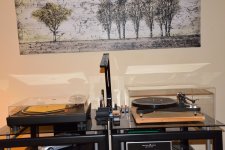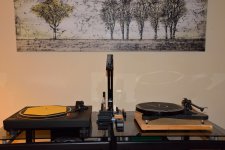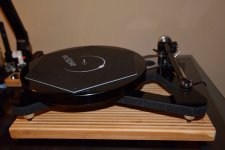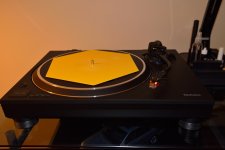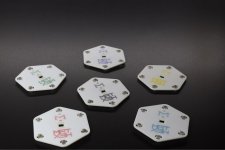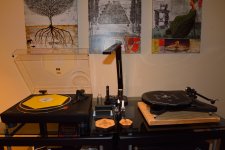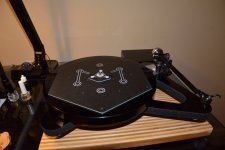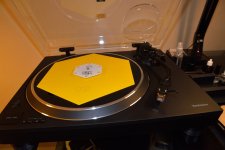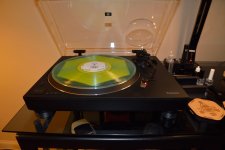I would invite you to read about it on the companies website. The claim is (and I am sure I am not remembering it 100% correct) that he has been investigating these technologies for many years. He also states that he made many (over 100) prototypes investigating various materials and designs. I have no idea why he choose the hexagon shape although my guess is purely cosmetic reasons :dunno:, I do believe that the shape itself is probably not critical because the record and the mat both rest on the small "dimples" I guess you would call them. This makes the affective surface contact to both the platter and the album extremely small, much more so than any of the other methods that have been attempted over the years. He does state that the material itself and the design are important... so maybe the hexagon shape actually is important

.
I do know, to my ears the improvements with the Yellow Bird compared to my other four mats is nice. I also know that the improvements with the new Eclipse are not subtle.
Here is from one of the several reviews on their website:
"Created by Zsolt Fajt, an engineer from Budapest in Hungary, he has studied the issue of vibrations and noise in and around hi-fi and has developed his own philosophies to tackle them. For a vinyl record, “I tried to get the size of the contact surfaces close to zero. The total contact surface of a record is several decimeters square. Using the Hexmat isolator, this surface is close to zero, just 1-2 square millimetres and the disk is almost floating.”
With its internal structure and coating, the Hexmat isolator isolates, “…these damaging vibrations from the recorder, generating full power transfer between the platform and the disk and utilizes the vibration damping properties of the spherical form. The Hexmat isolator is a clamping mechanism that separates the record from the vibrating mass it contacts and allows the vinyl to have its own fairly good damping properties.”
One of the benefits of this system is, according to Fajt, “Less noise due to more accurate groove tracking.”
And the man has been working hard on this thing, from what I hear. More than 100 prototypes of this mat have apparently been made with a variety of material compositions including a variety of polymers, stabilised wood species, tropical trees pieces, industrial metals, ceramics, gold, silver, crystals, gemstones, various coatings and, apparently, many more besides, “During this time, we have experienced what works, what does not and how to produce it. The range of variations is almost inexhaustible. Because the combination of materials used has a dramatic impact on sound, we are planning to release several product variants. Our current product is a first series entry-level device.”
Now I did try to get more information from Fajt about the exact materials used, the shape of this mat, the nature of the blisters on the mat that push the vinyl record vertically up and away and more. What I received in return were polite deflections and, to be honest, I can see why. Revealed build secrets will open up the mat to copying by others which will then kill Hexmat stone dead, stopping Fajt’s income and taking him out of the game. So, I can understand is reticence. I’d be the same, to be honest. "
Here are his conclusions... there are several other reviews reporting similar results:
"With the Hexmat in place, the sonic response was intriguing indeed. I considered this test a tough one because I have used the wholly excellent Origin Live mat for some time now. Its a simple looking mat but uses some exotic materials within. I’ve had no cause to doubt it but this, admittedly more expensive, Hexmat added something...
...Despite the relatively high price, the over-riding effect of the Hexmat was to clean your music. That is, the enhanced sense of clarity was superb. The effect smoothed the upper mids towards your ears, added precision to treble and tonal accuracy to bass. For jazz, this included an intriguing analytical sense to the accuracy of the presentation.
The reduction of noise and the added precision that reflected that also added bass impact and weight giving rock movement and a sense of power. While rock vocals created a new sense of urgency.
I fully expected to be underwhelmed by the Hexmat. Oh how wrong I was. It is, in fact, a little cracker."
